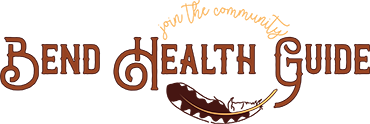Tai Chi – Once Alternative, Now Mainstream
No matter the reason people are drawn to Tai Chi (太極), whether it be the long and rich history, the ties to Chinese Medicine, the connection to Eastern philosophy (i.e. Tao Te Ching) or the martial art aspects, there are now numerous medical studies that support what many have experienced. Tai Chi is an effective tool for overall health and another option for management of chronic pain and depression.
Many students begin the journey of Tai Chi for a low-impact exercise to regain movement after an injury, or for a way to manage stress. Often called a “moving meditation” Tai Chi focuses on the idea of “balance” or being “centered”. The balance discussed in practice is not just stability, but the importance of balance in every aspect of living, such as working, eating, resting, emotions and exercise.
This concept may not be obvious, to the observer, Tai Chi looks like a beautiful, mysterious dance, however, each movement when done correctly, has the purpose of directing energy through the body. Even in the first movement of placing your feet shoulder-width apart, the breath is coordinated with the foot, lifting from heel to toe and breathing out when the foot is placed down from toe to heal, connecting the energy back down to the earth. Every movement has a coordinating breath and focus of energy placement.
The Harvard Medical School Guide to Tai Chi author shares what he has come to appreciate as “The Eight Active Ingredients of Tai Chi” as 1) Awareness (including mindfulness and focused attention), 2) Intention (including belief and expectation, 3) Structural Integration (including dynamic form and function), 4) Active Relaxation (the flowing motion allowing deeper levels of relaxation), 5) Strengthening and Flexibility, 6) Natural, Freer Breathing 7) Social Support and 8) Embodied Spirituality. “Like the components of a multi-drug combination to lower cholesterol and blood pressure, each ingredient is believed to have a unique impact on the physiology of the body”.
As a long time practitioner and instructor of Tai Chi, Master JianFeng Chen of Oregon Tai Chi Wushu in Bend can attest to these benefits and that the “Social Support” is an often overlooked yet crucial aspect of practice. He likes to tell his students to not compare yourself to others practicing, but to share with your fellow students. The practice of learning an art together holds you accountable not just to yourself, but the community, and from this shared energy comes more strength and balance.
All ages and abilities can practice and with the many styles and forms of Tai Chi, there is a lifetime of learning to keep the student engaged. Once you have learned the basic foundations correctly, you can practice anytime, anywhere, alone or in a group. Even though Tai Chi can be a low-impact exercise, individuals with health-issues should consult their physician before engaging in any new activity.
“Balance, Focus, Health for Life” is the philosophy at Oregon Tai Chi Wushu and what Master Chen strives to help the community achieve through Tai Chi.

Oregon Tai Chi Wushu


Leave a Reply